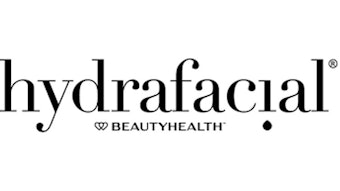Contract packaging/filling experts share insights and detail some overlooked basic considerations brand owners should keep in mind when working with a contract partner toward creating a successful beauty product and beauty brand.
Meet the Panel
- Christine Lee, product development, Chemolee Lab Corp.
- Christopher White, president, The Filling Station
- Judy Cervantes, vice president of operations, Quality Design And Packaging, Inc.
Q: What are some of the basics a brand owner working to introduce a new line or extend a line should know when choosing a contract packager/filler?
Christine Lee: There are many points to consider when selecting a contract packager/filler. First is location; shipping is not cheap. How close or far is it to your distribution centers? Also, each filler will have strengths and weaknesses in its capabilities, so brands will need to find a filler that is best at filling their type of packaging in the most efficient way.
It should also be FDA approved if it is making OTC drugs (like sunscreens) and be current good manufacturing process (cGMP) compliant, which gives you the confidence that it has adequate quality control and other checks in place to perform professionally. And by all means, go visit the filler if possible.
Christopher White: Whenever we meet with a new customer, speaking about long-term goals is foremost, as short-term results do not help either of us. Also, [a contract partner must be] honest about what the company does best.
Judy Cervantes: Perhaps the most important thing is whether that contract packager is going to deliver the finished product on time. With any new launch, time is super important, and a brand owner needs to feel confident that when she says, “I need this completed by Friday of next week,” that the contract packager/filler is committed to that date and will work late or come in on a weekend if necessary to complete the job on time. It does not matter how good a “deal” a contract packager/filler gave you if the product is late.
Then, of course, specifics are very important. The finished product must be batched, filled and packed out just as the brand owner specified. And, lastly there is a budget to consider. I tend to go by the old adage, “You get what you pay for.” So, I would suggest to brand owners to be conscious and consider how detailed the filling or packaging is to the finished product and what quantities will be ordered [in order] to expect a realistic price. I always tell potential customers, the more we have to touch the product, the more costly it will likely be to pack out.
Q: Other than look and style basics (tube or jar, for example), what are some of the decisions that a brand owner needs to make about product packaging?
CL: A brand owner must keep in mind who their end user is, and how and where they will be using the product. I recommend putting yourself in the consumer’s shoes. How will they dispense the product—using one hand or two? Are they using it in the shower? Are their hands wet, etc.? Keeping in mind the environment and who those users are when selecting packaging will guarantee a good consumer experience.
CW: Quantity for packing—as in how many do you sell at one time so shipping is easy and predictable. Also, size dictates sell-through, so do not make the item too big.
JC: Cost, stock versus non-stock item, minimum order quantities, stability of the product itself, lead time and ease in filling and packaging. This last one is important because a bottle may be great on all of the initial points (cost-effective, stocked and easy to get, low minimums and quick delivery), but if it’s difficult to move down a [production] line, hard to label or fill, or not compatible with the cap or pump, etc., then all the other points become null because it’s a pain in the neck to fill and package, and thus more costly. This happens more than it needs to happen, and it simply causes too many delays and extra costs to brand owners.
Q: How can packaging impact filling and the associated costs, either negatively or positively? Does a brand owner need to also understand some filling basics before making final packaging choices?
CL: Depending on the filler you select, some may be more automated than others; some may have more options as well. Find out what a filler is good at before making a decision. There are many small add-ons in filling that can impact the labor of a job very quickly. A brand owner should think about the total finished good from the beginning, and discuss this with the filler to get the most accurate quote without any add-on surprises later. Will there be a shrink seal over the cap? Is there an individual carton? Is there any special tag that will need to be hand placed? Is special coding needed? All of these can add cost.
CW: Yes. Brand owners need to understand some basics. For instance, if they intend to use the cheapest package [sourced from overseas], then the waste factor will be higher and lead times will also be longer. And what if customs holds the packaging you’ve purchased from an overseas supplier? It does happen.
JC: Yes. For example, a tapered bottle at the base will not be stable on an inline fill line and therefore will be difficult to fill. It will also be difficult to achieve the most accurate torque when capping because the varying diameters of the body of the bottle will affect the capacity to automatically torque.
Quality of components is of utmost importance. For example, a tall clear bullet- or cylinder-type bottle that has the minimum weight of plastic to pass its specs will be very difficult to label because the walls of the bottle will be so thin that it’s nearly impossible to apply a pressure-sensitive label. Screen printing is the best way to go with these bottles versus labels.
Q: When starting with stock packaging options, what is the best approach for then building and adding customized aspects such as decoration to the packaging? Is this a collaborative process between brand owner and manufacturer?
CL: Our customers handle their own artwork, but should the brand owner want some guidance, I believe that the manufacturer would be able to give some direction to enhance decoration of packaging. But in my opinion, the product is owned by the brand, and the brand should make the final decoration decision. The manufacturer can be there to guide in terms of what is realistically achievable, because all packaging will have some limitations.
CW: Usually, it not a conversation we have unless the decoration is something that may be marred in the filling process. However, we feel that anything to make the item look better is a great sales tool.
JC: We don’t sell stock packaging, but I often recommend it to customers who are looking for the most cost-effective components. Then I emphasize investing in a designer to design a beautiful label or screen art to place on the stock packaging. I always tell brand owners to look at Kiehl’s brand—basic stock packaging. And the brand works because its labels communicate what the products do and then the products deliver just that.
Q: What are your recommendations to create a cohesive package strategy beyond choosing a packaging family?
CL: If you already have selected a packaging family, just make sure you highlight the product benefits clearly to the consumer. Make sure that the packaging is clear and easy to understand and read when on display/shelf. Don’t skimp on printing, and use good quality labels so they don’t scratch or peel off when wet.
CW: Make sure that the items are always available for sale, and lead times are also a priority. The last thing you want is to build a theme and then find out packaging components are not available. We have had it happen to customers.
JC: Availability and quick lead times. When a brand owner is starting a brand, she has sales estimates and forecasts, etc., but what if the brand takes off faster than expected? In this case, a brand owner needs more components quickly and likely does not have 8–12 weeks to wait for more packaging to be available and ready to run.
Q: With more consumers seeking lower price points and added value options in product packaging, what challenges are brand owners facing when considering packaging/filling, and what are some strategies to overcome these challenges?
CL: If you can be open-minded, there are many ways brand owners can work with their contract filler to come up with ways to save. Do you really need that paper insert inside the carton? Maybe you can have the information available online and/or print as much on the carton. Or get rid of the carton altogether and do a multi-ply label instead to save cost and labor.
Rather than using shrink seals, see if your packaging can come with a built-in seal inside the cap to reduce filling labor. Every product is unique, so if you can be open with your filler to discuss your desire to cut costs, you might be able to save a few pennies—and that can go a long way.
CW: Price is a relative thing. Customers forget that delays, waste and shipping eat up more profit than the initial price. If that’s not considered, everyone loses.
JC: I’ve been doing what I do—contract filling and packaging—for nearly 13 years and still believe what I learned very early on: Invest in quality components.
I strongly believe that, over the long run, the low price points are reached because one incurs lower-to-no scrap rates, avoids delays and extra shipping costs or [retail losses or costs] for being late, or plain old loss due to low-quality packaging (leaking on shelves or in transit).
Also, select a filler/packager that understands the brand owner’s urgency for responsiveness, quality and timeliness—one that returns e-mails and phone calls quickly, fills and packs out darn near to perfection and gets it done when the customer needs it to be done.










